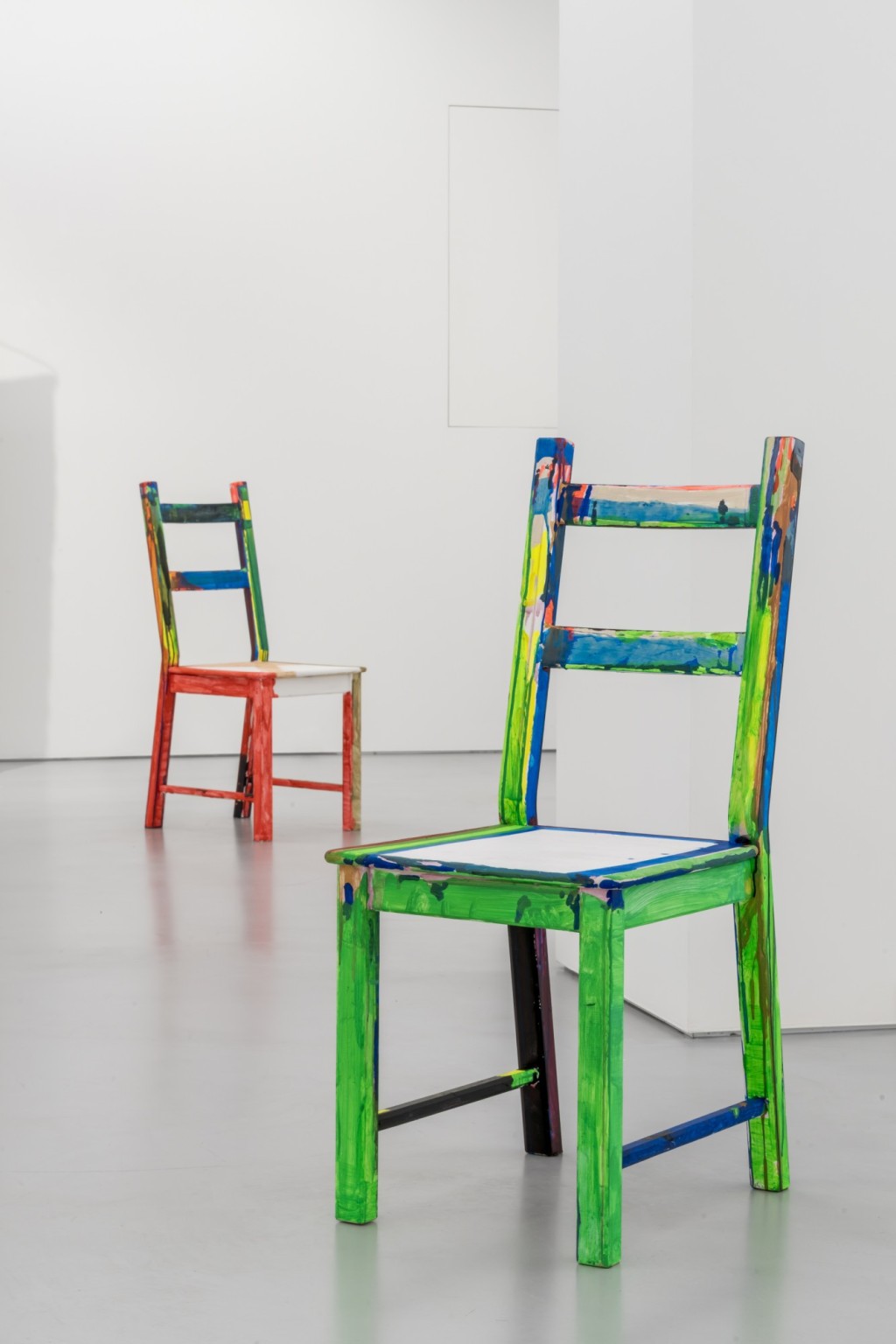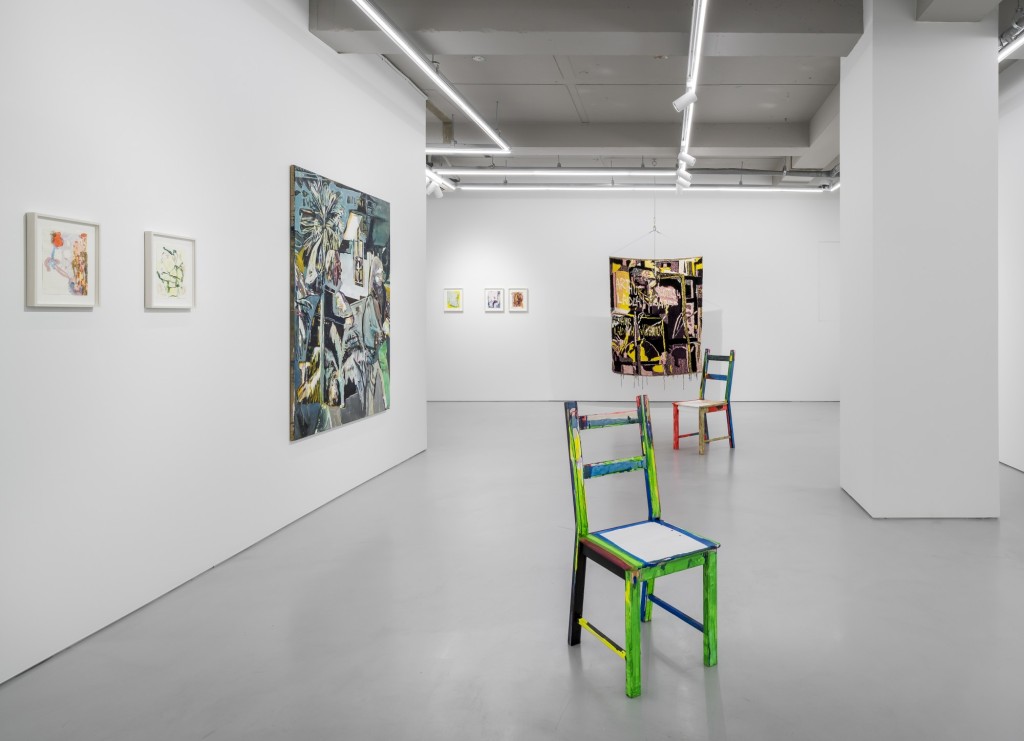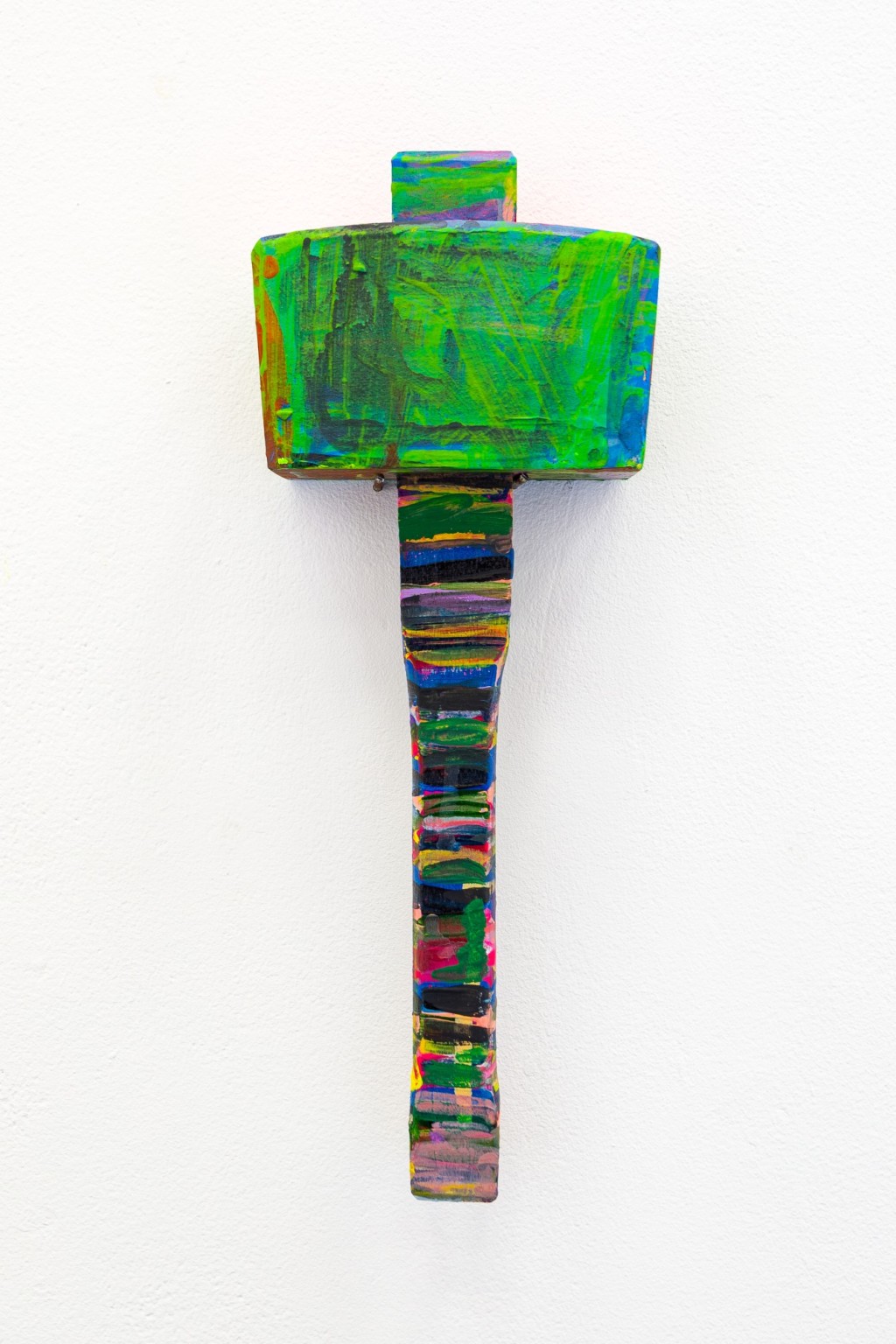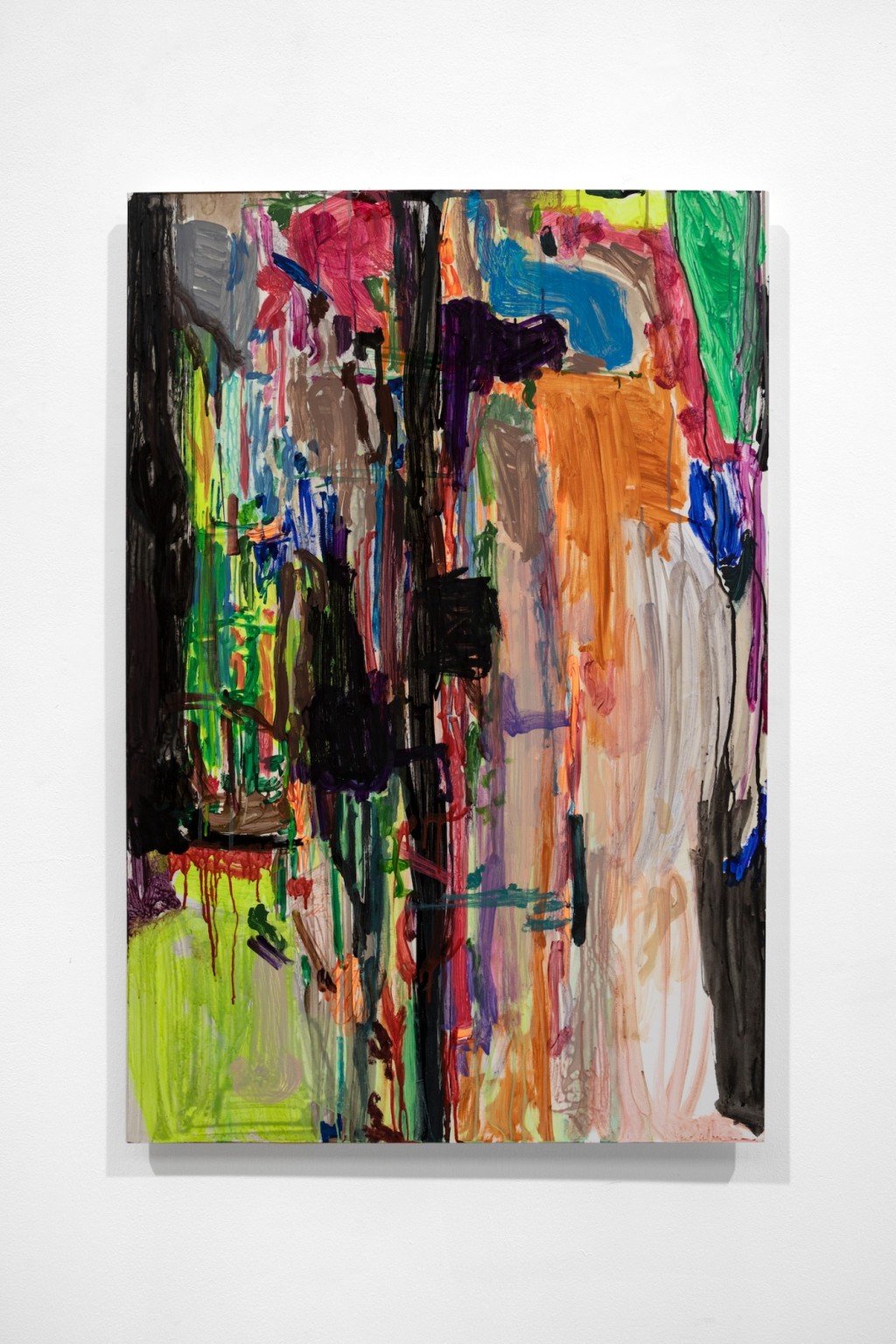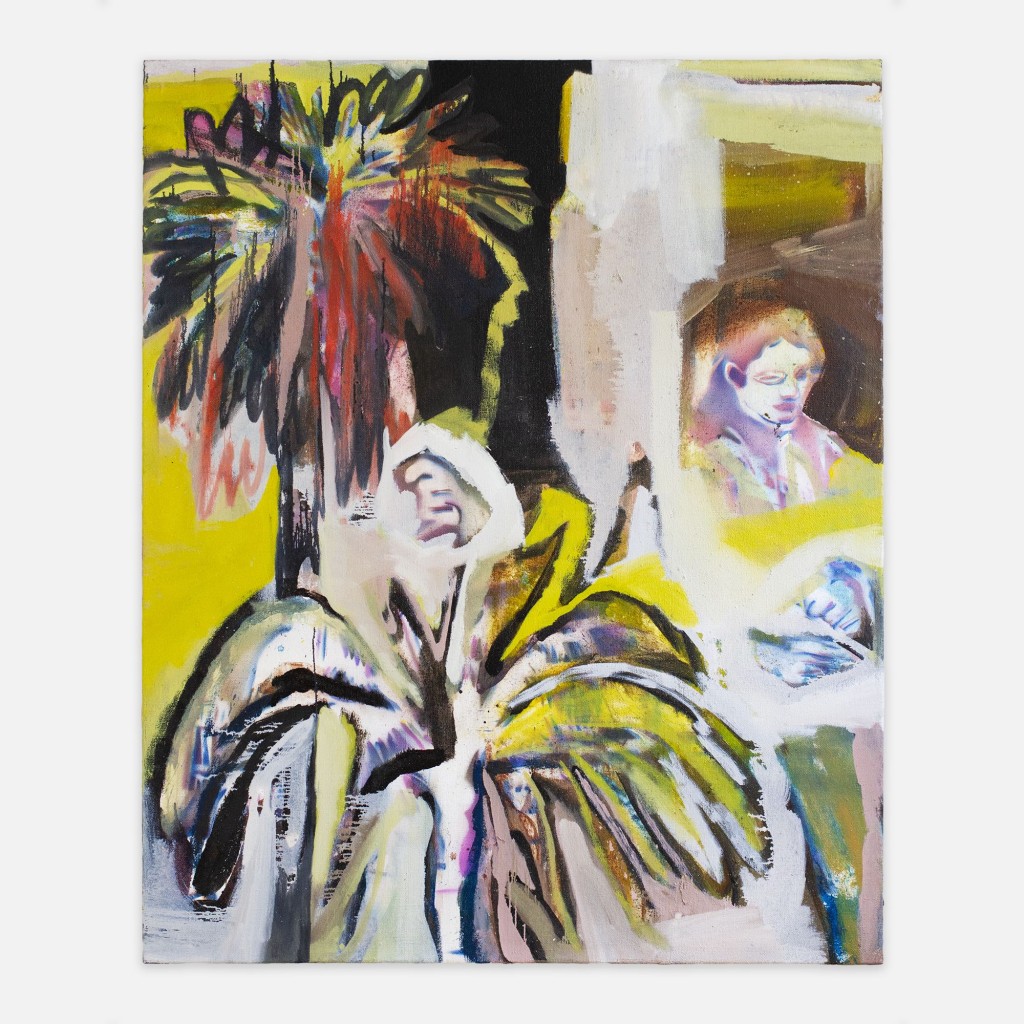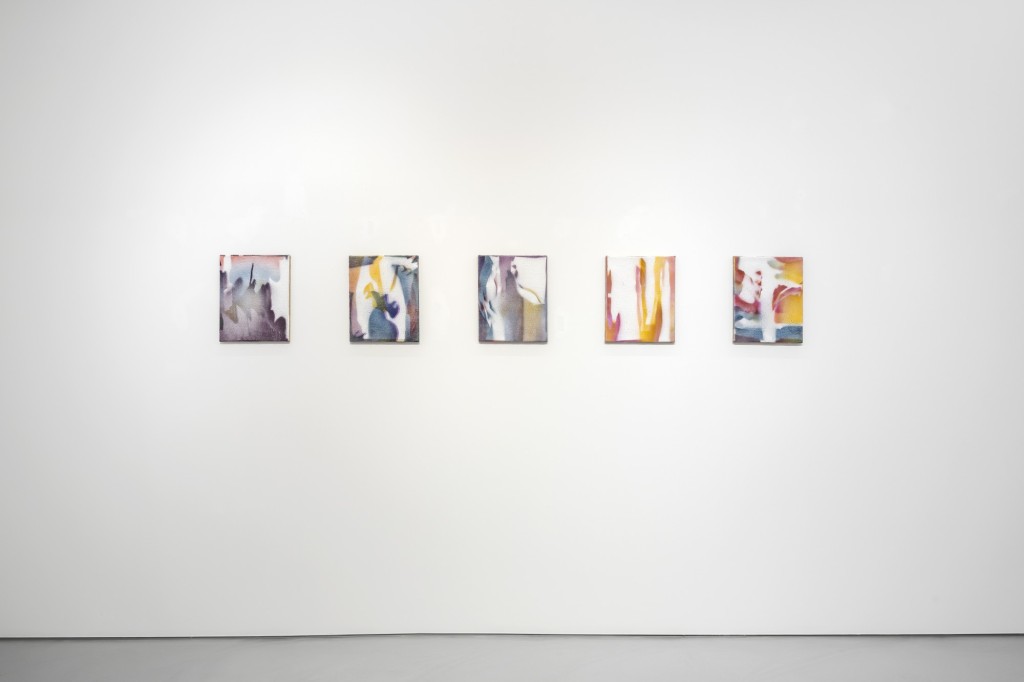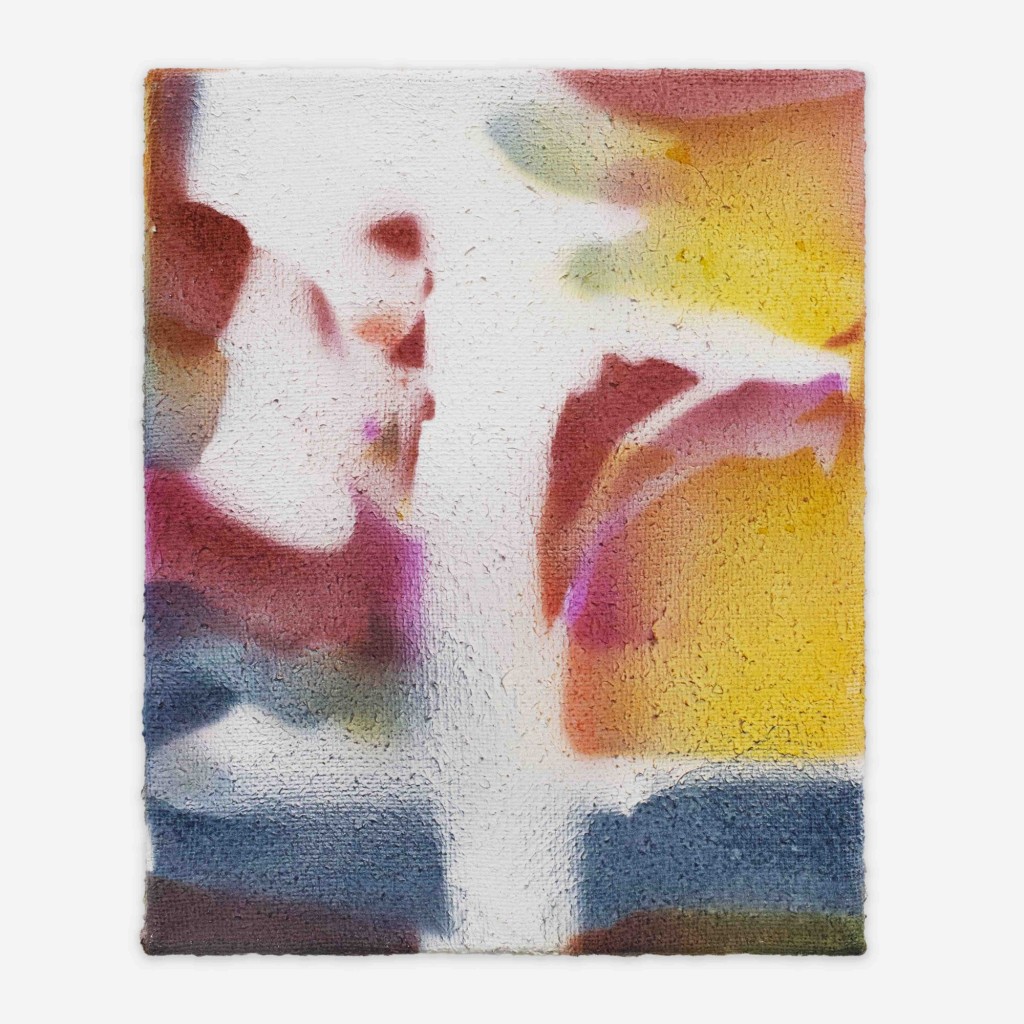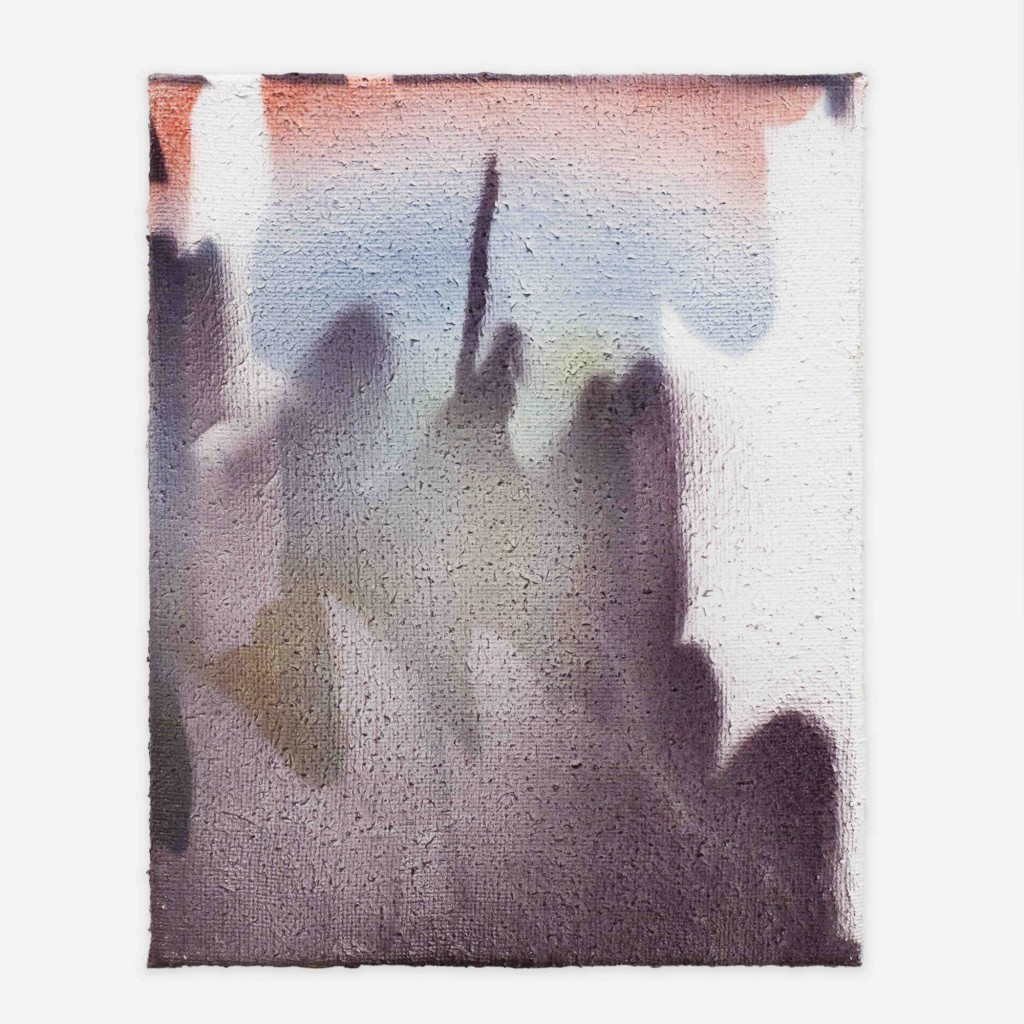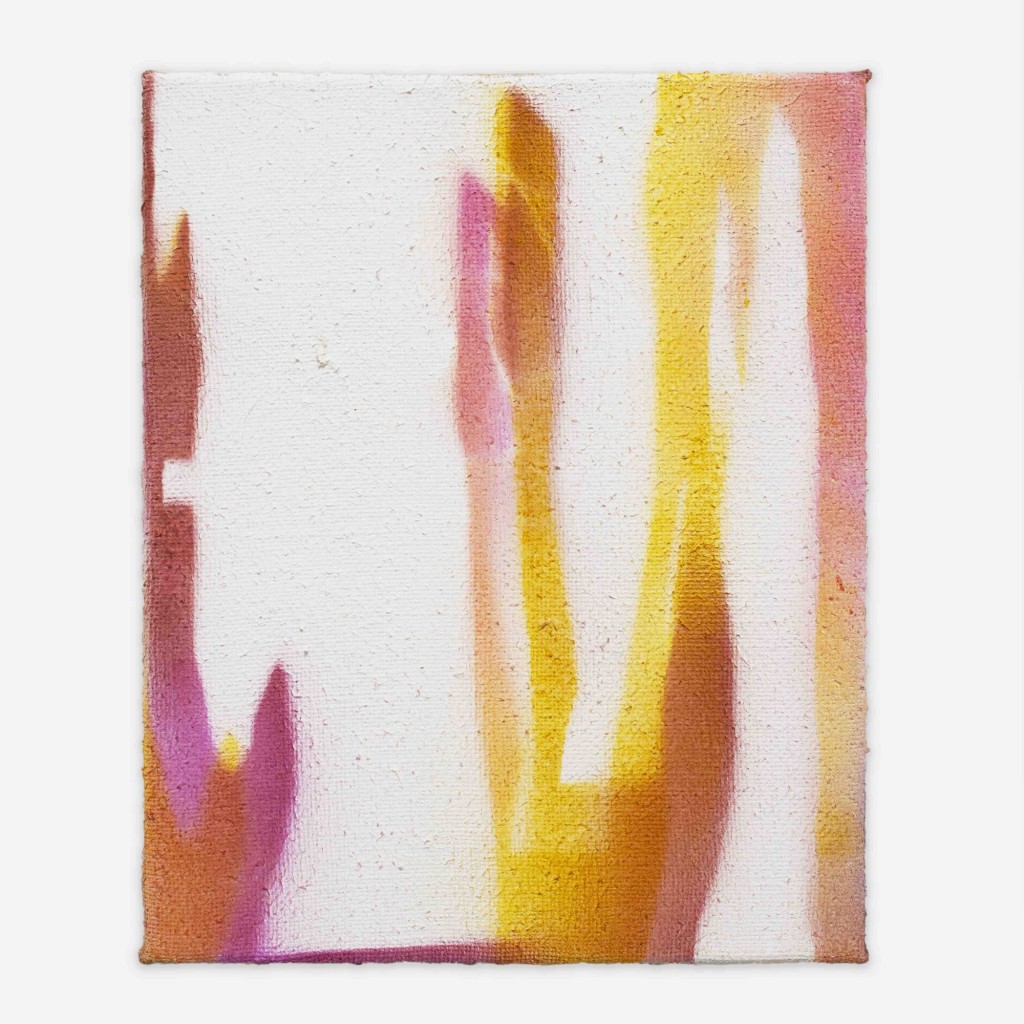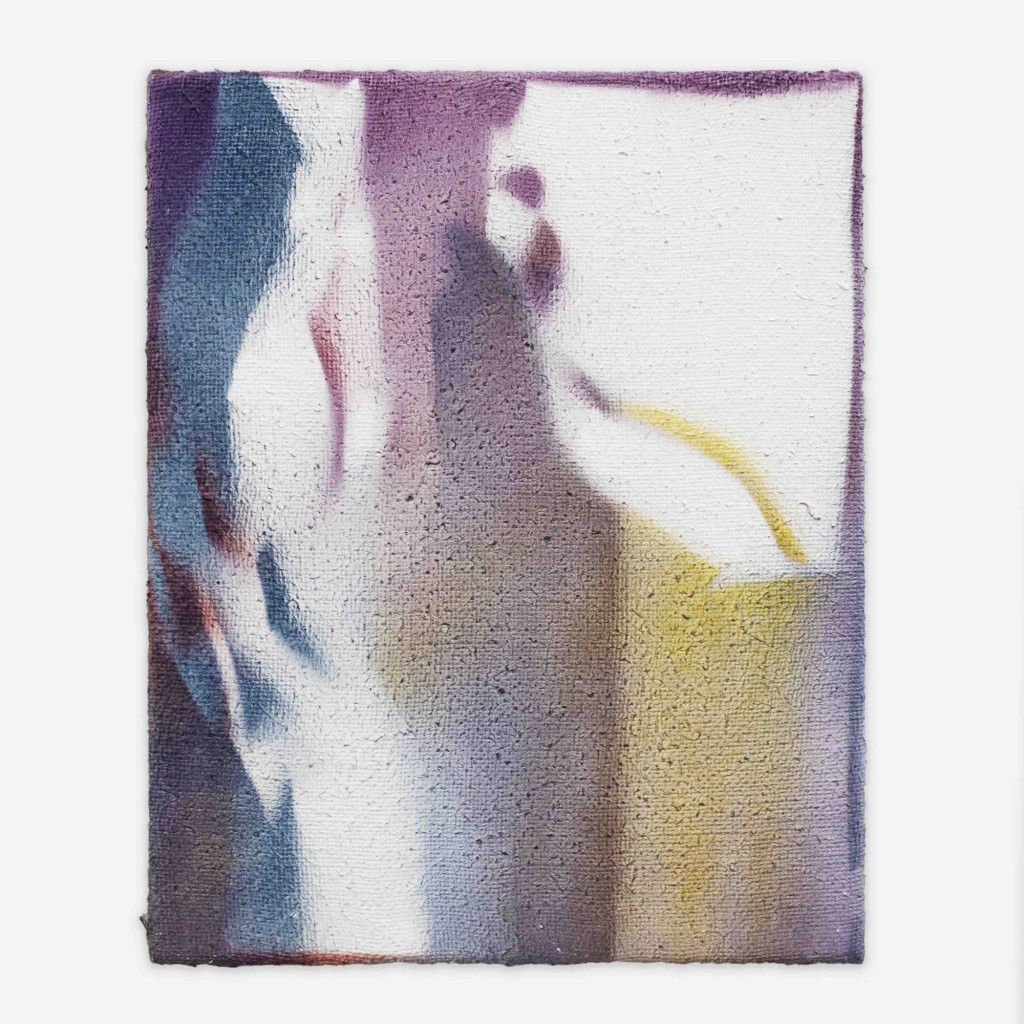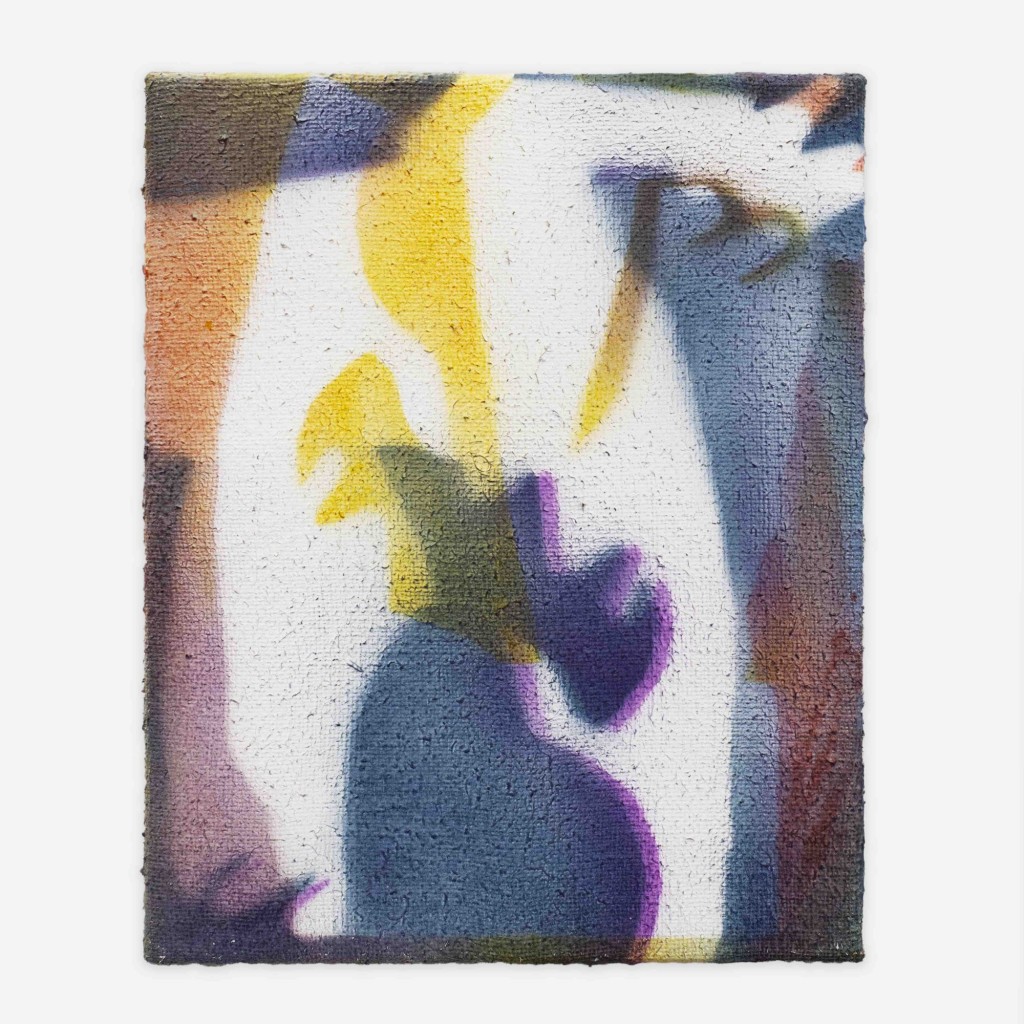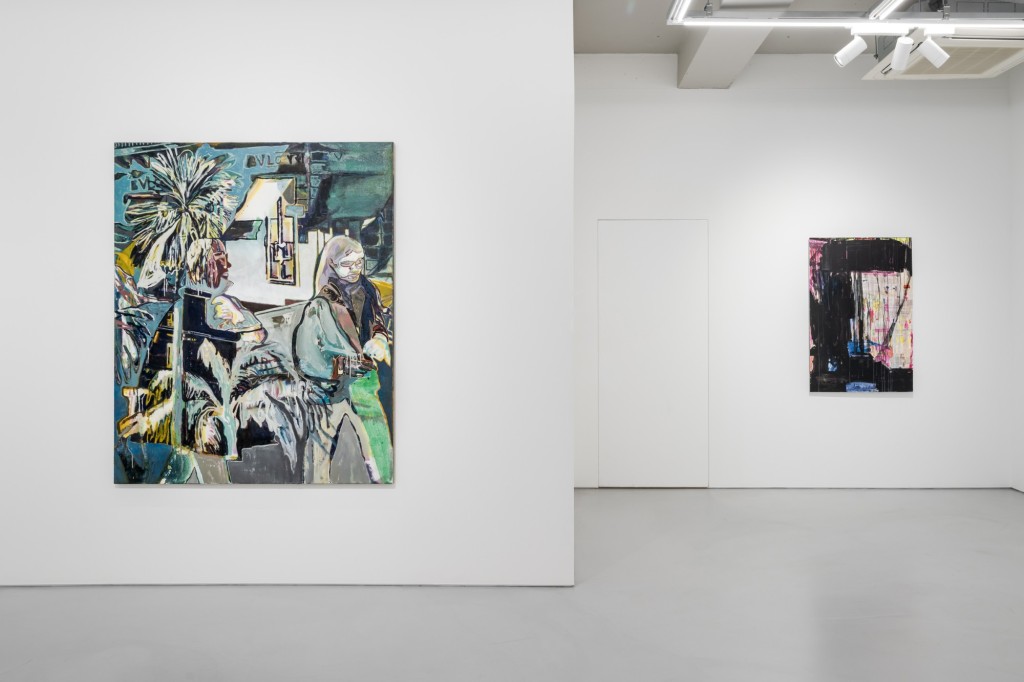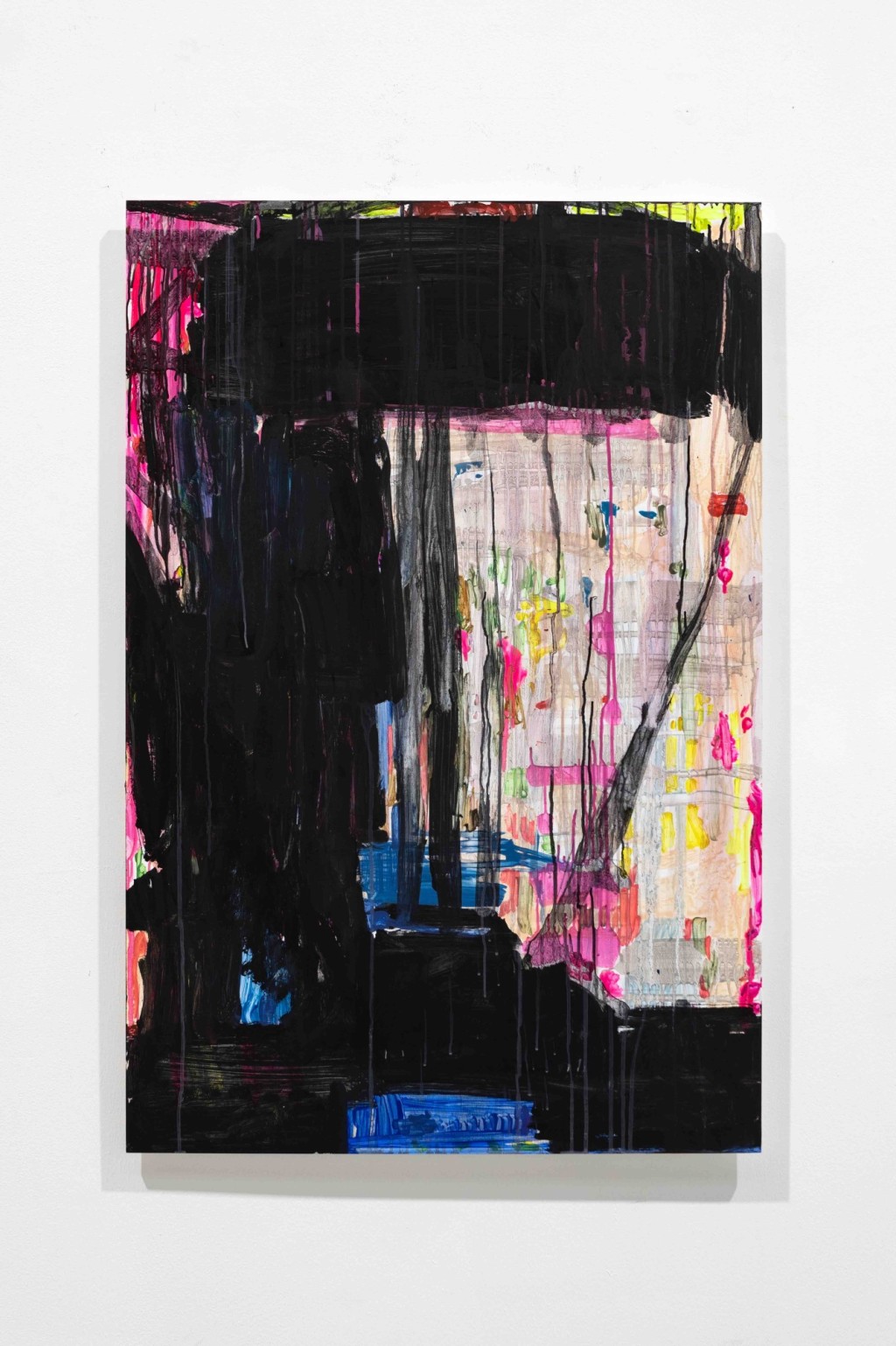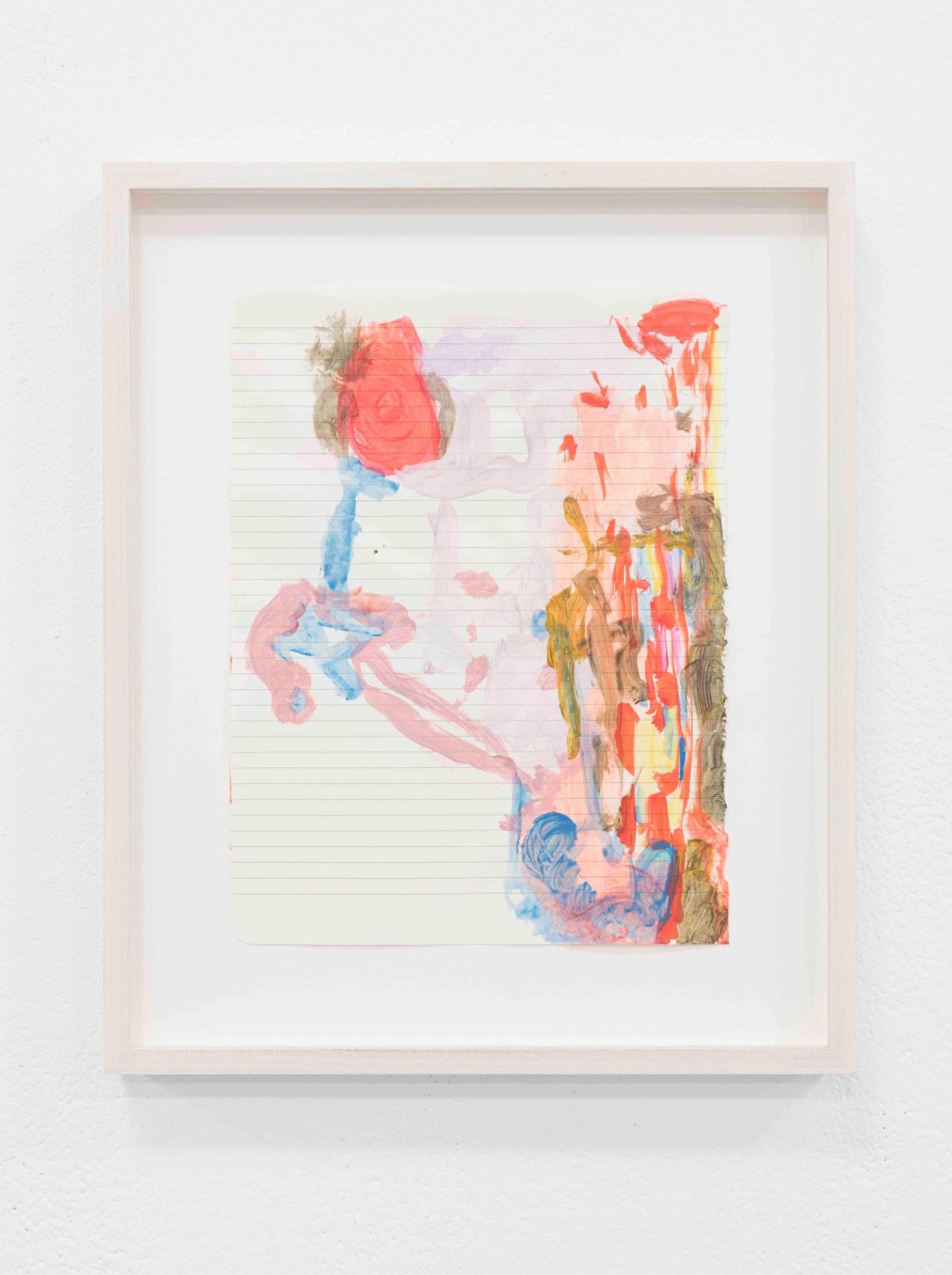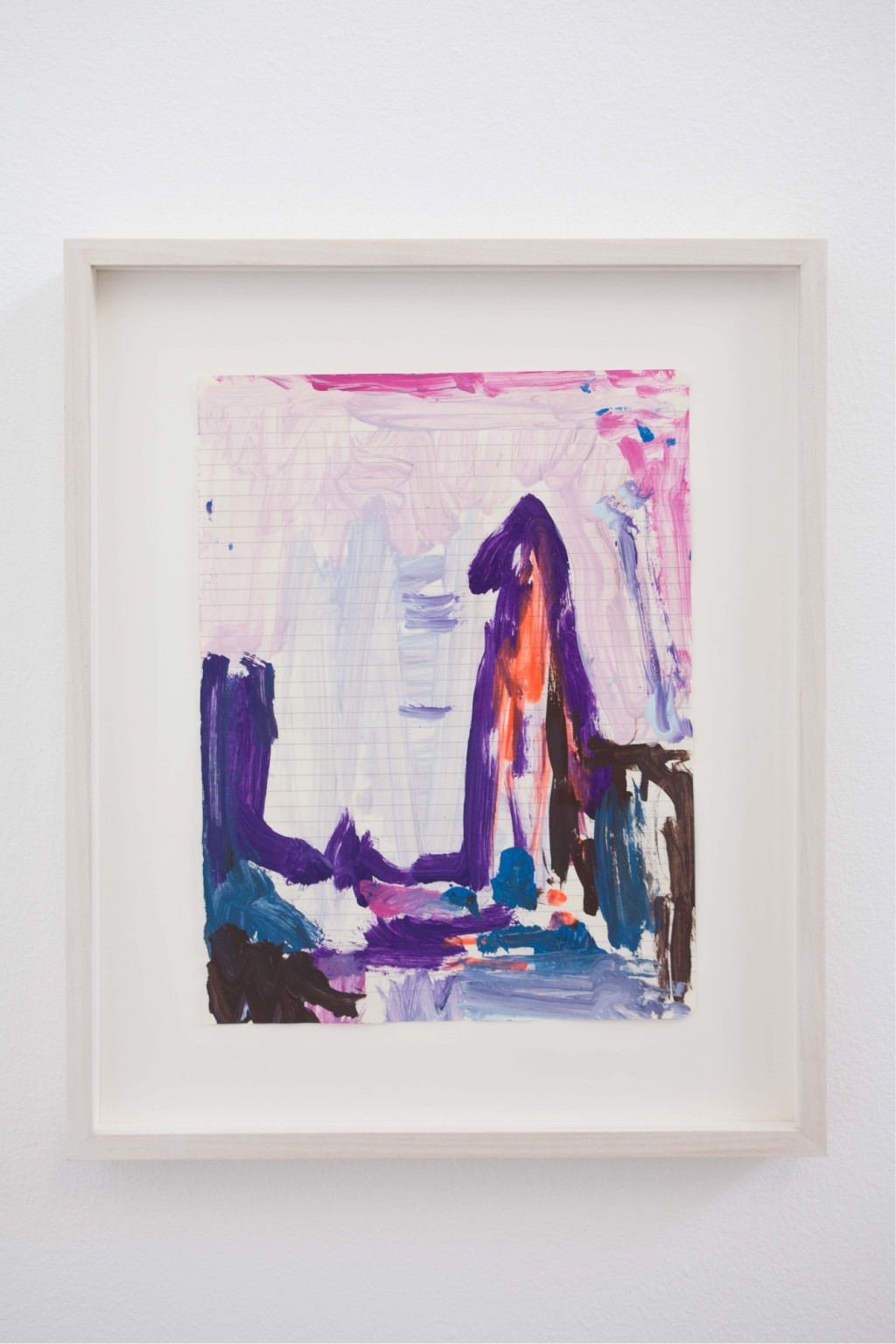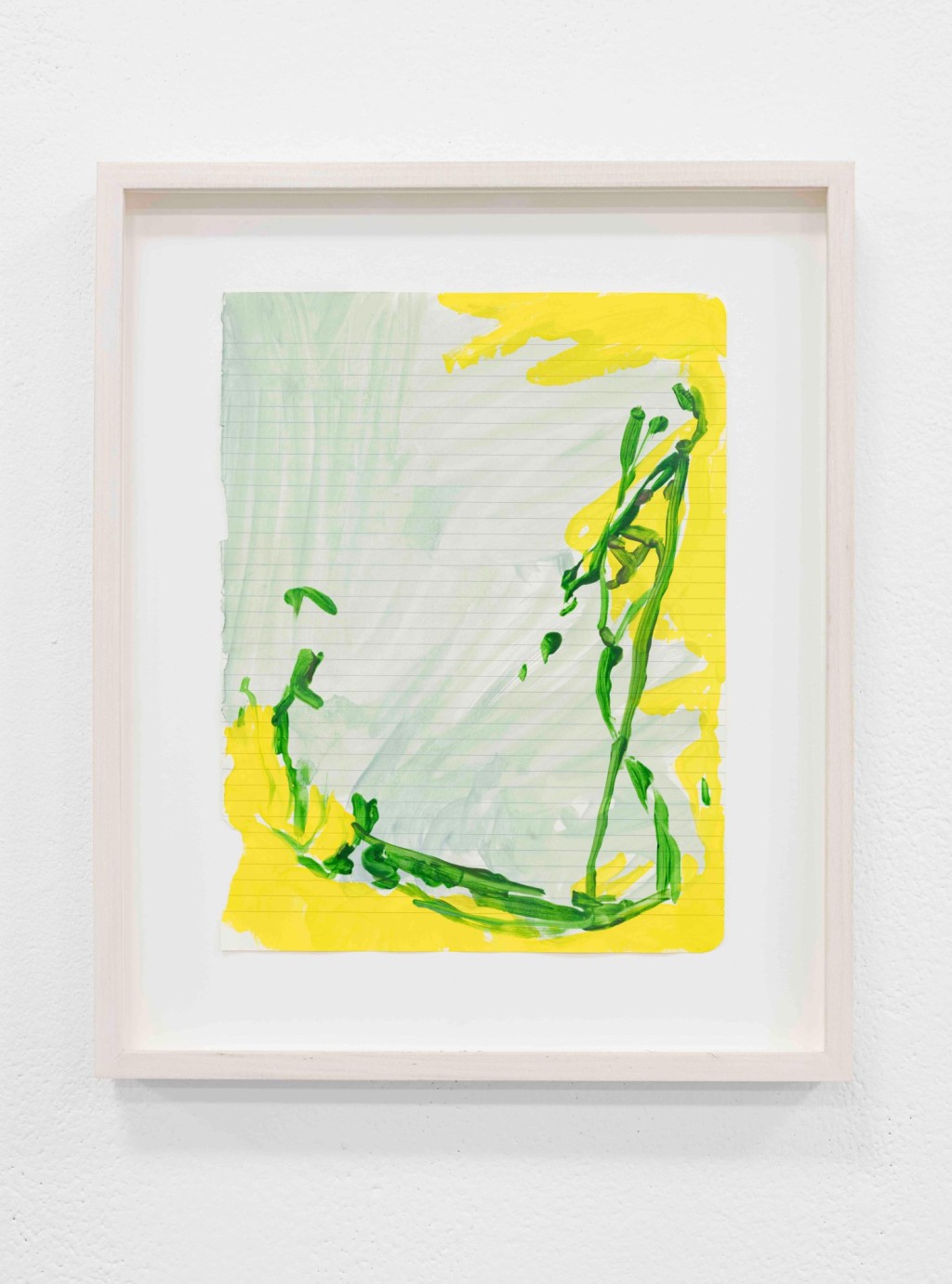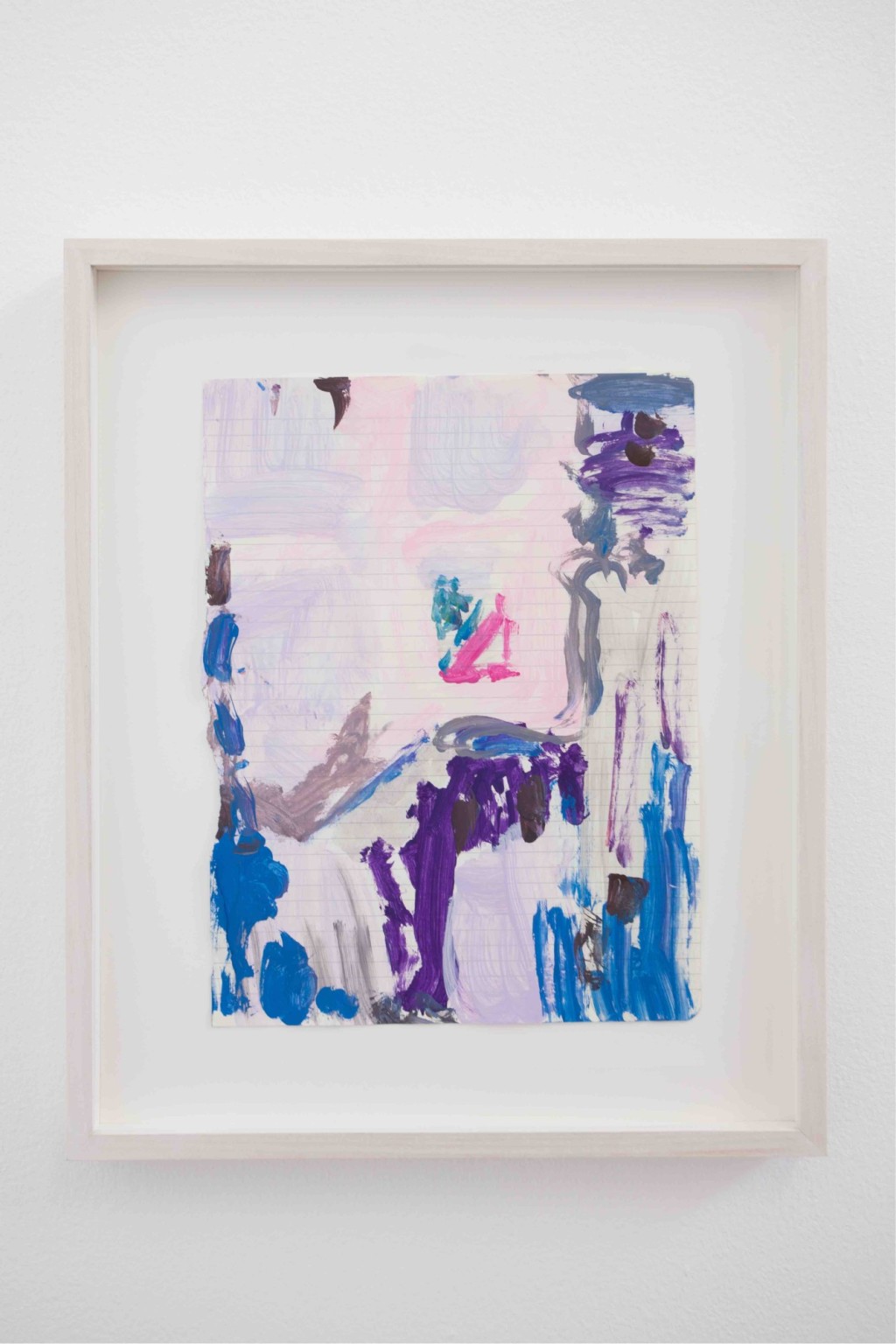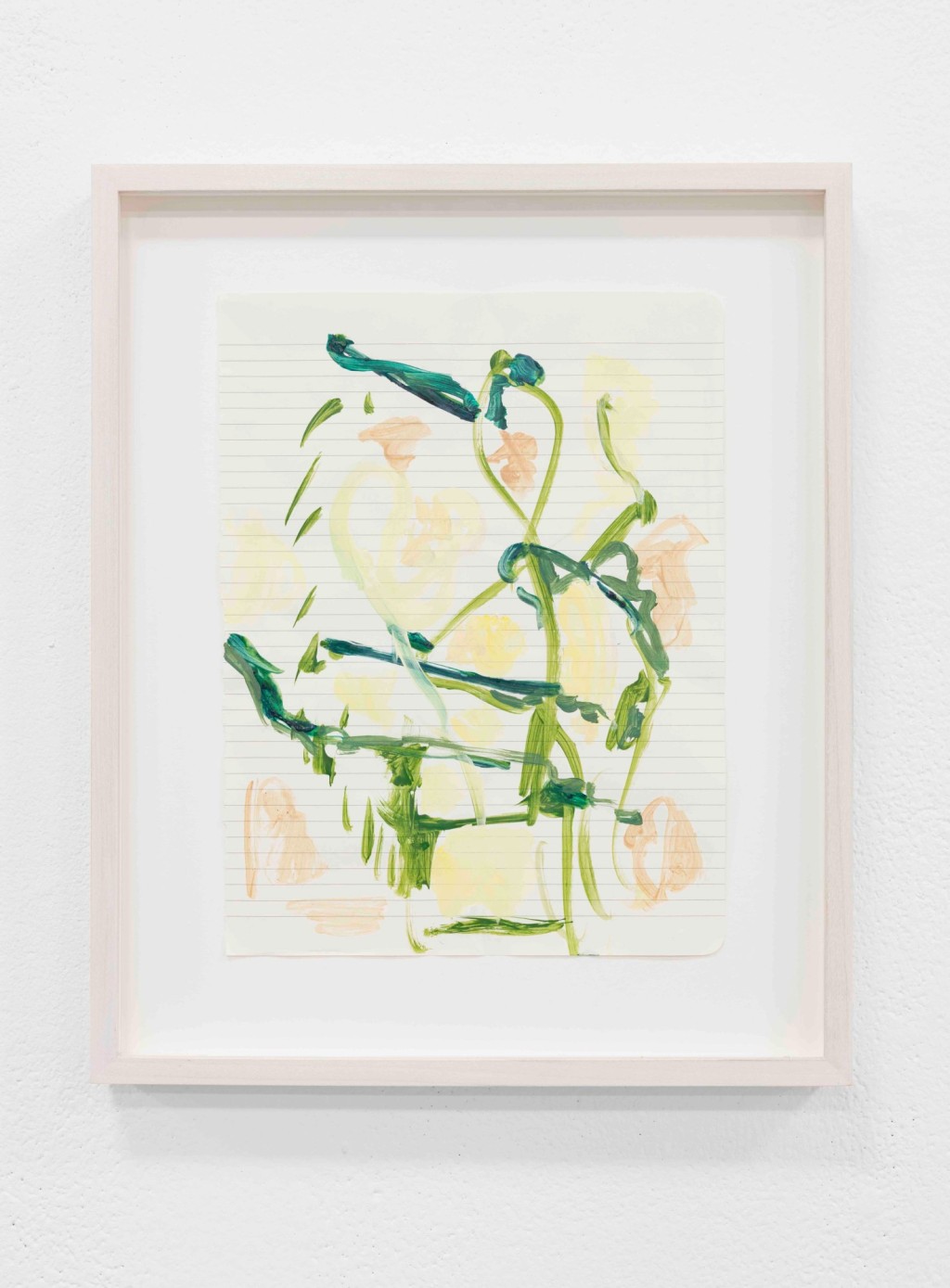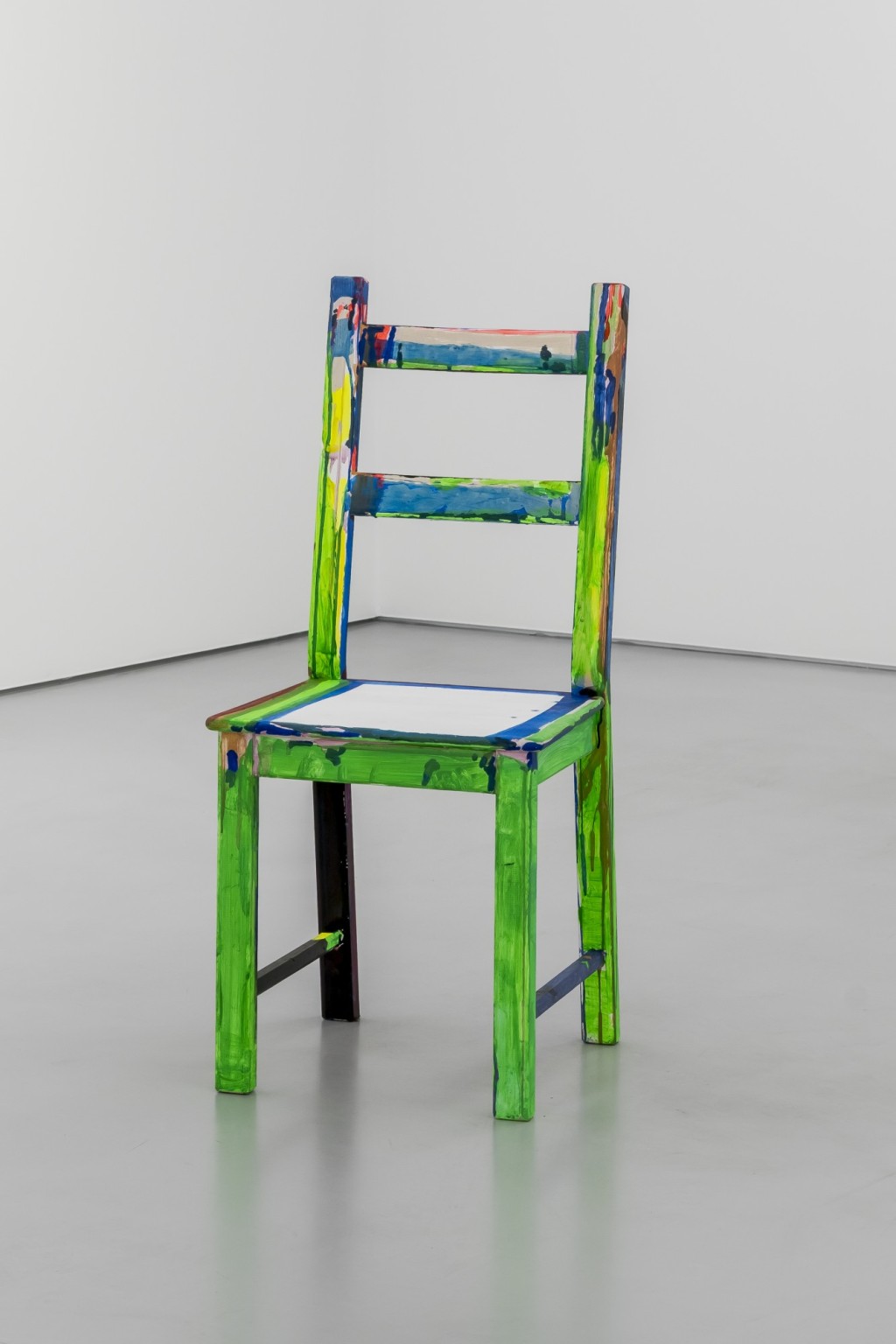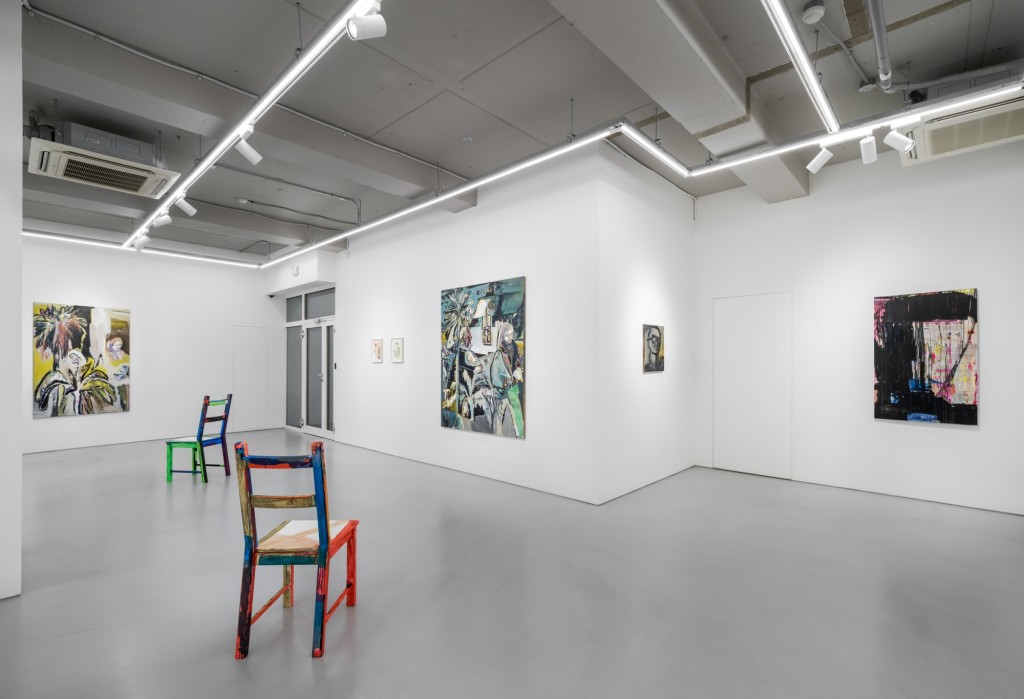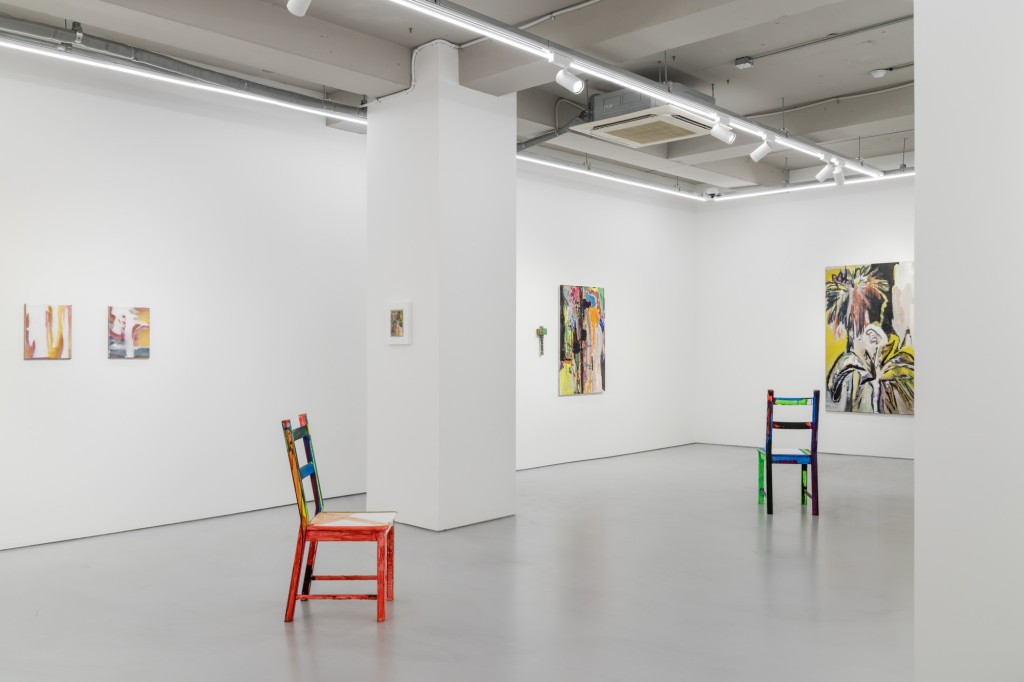
Arthur Laidlaw & Hayley Tompkins
4 – 30 August, 2023
Why fascination? Seeing presupposes distance, decisiveness which separates, the power to stay out of contact and in contact avoid confusion … But what happens when what you see, although at a distance, seems to touch you with a gripping contact, when the manner of seeing is a kind of touch, when seeing is contact at a distance?
In The Space of Literature, French philosopher Maurice Blanchot writes that it is only possible to see something with distance. Seeing necessitates separation. 'Fascination', he continues, is a kind of seeing which has got too close – a ‘gripping contact’ which paradoxically confuses and obscures the image.
For Arthur Laidlaw and Hayley Tompkins, the act of looking is a shared fascination. In their works, a desire to ‘really see something’ becomes entwined with desires for proximity and tactile immediacy. Looking is enacted through gestures of painting, tracing, coating and dissecting; thick layers of material and repeated details which can feel at once caring and obsessive, loving and smothering. The results are bright, dynamic abstractions and tangled perspectives, far flung from any objective visual reality. For these artists, after all, the goal of looking was never really to represent – rather an attempt to collapse the distance which separates artist from image.
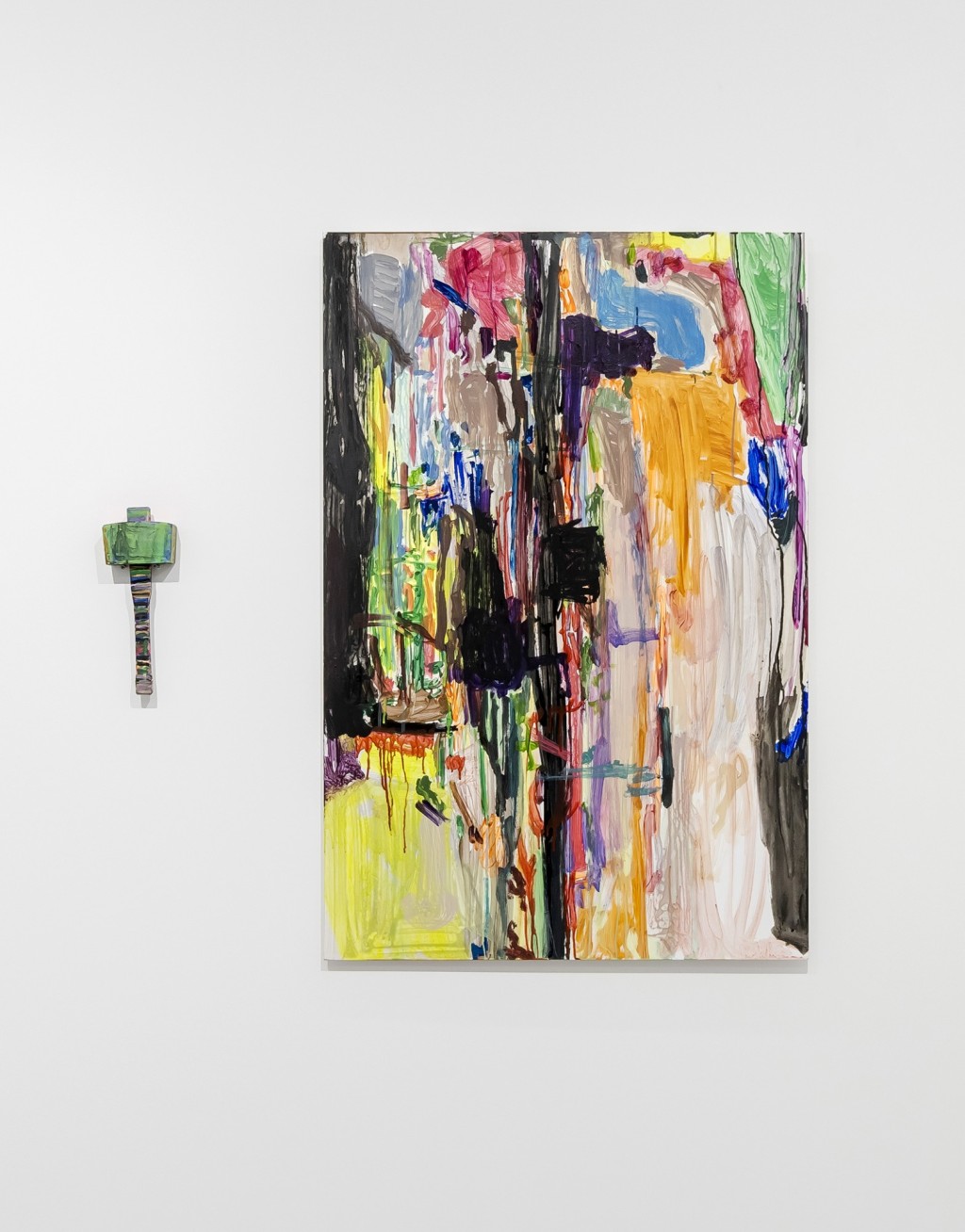
Arthur Laidlaw’s compositions are closely informed by the techniques and nuances of photography, and he has suggested that the paintings could be seen as an attempt to capture something missed by the photographic instant. Compositions often begin with the merging of two or more film photographs, after scanning the negatives and processing them digitally. Laidlaw adjusts the transparency, inversion and contrast of each image, before converting the collaged composition to greyscale, loosely indexing each shade of grey to an approximate paint colour for the final work. This results in a redistribution of light and shade, positive and negative between the layered images, and disorients the perception of space. Laidlaw’s colour choices are also informed by this digital inversion: livid violets and muddy ochres, bright empty whites where shadows should be.
From shapes and outlines in these initial edits, Laidlaw makes charcoal drawings on paper, out of which paper stencils are cut with a scalpel; these cutouts are then used for an application of sprayed gouache, providing the foundational layer of his images. On top of the gouache, the artist builds layers of acrylic and oil paint, sometimes tracing the background gouache, sometimes interrupting and contradicting it with loose, expressive strokes. The two large format paintings Fallow and Fallow 2 each began this way with the same stencilled background, however further layers of oil took them in different directions. Still, the original shared composition echoes through, alluding to fragments of experience and memory which can haunt future moments.
These meticulous processes of layering, editing, mapping and tracing of an image’s structural components could be read as an obsessive attempt to pry open some central, buried truth. However, narrative clarity or pictorial coherence always gives way to a rich, emotive, conflicted subjectivity. A fascination with the act of looking gets caught up in the plural possibilities of material process, and images are free to merge, oppose, echo and clash without conclusion.
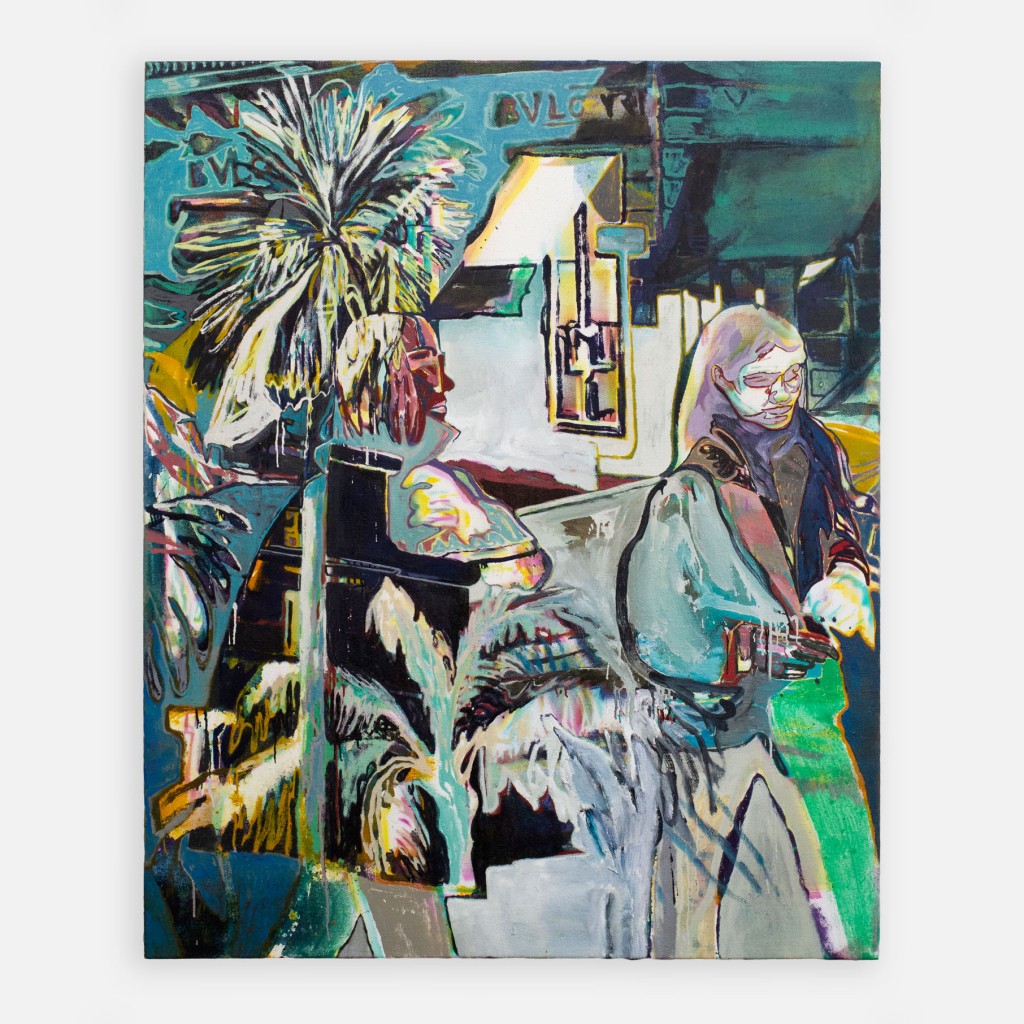
The paintings and painted objects of Hayley Tompkins also deal in contradictions. Her painted wooden chairs and mallet merge the familiar intimacy of a functional object with the untouchable aura of ‘a work of art’. By coating these objects with paint, it's as though the act of looking is replaced by the stroke of the brush. The artist’s gaze becomes identical with the tactile handling of the thing and the applications of paint which smother it. ‘Looking’ leaves a residue.
Tompkins begins by painting the chairs entirely white, denuding the object of its original associations before adding layers of colour. She will often work on several pieces in tandem, mixing one colour at a time and applying it to a number of different pieces before moving to a new shade. She describes this process as a ‘cross-pollination’ – an opportunity to ‘see what the colour is doing’. Long brushstrokes follow the chairs’ straight edges, as if tracing its form to make a drawing in space. This apparently simple application speaks to a particular intimacy of attention seen throughout Tompkins’ work, making visible the direct moment of contact between observer and observed object. While she would usually apply colour all over the chairs, for this exhibition Tompkins has allowed white spaces to remain as a vague performative absence: an invitation, perhaps, for a body to be held within the painting.
Tompkins’ works on paper and panel paintings follow a similarly intuitive process, arising as records of changeable moods and shifting states of mind. Some compositions are densely filled with interlocking blocks of colour suggesting the solid forms of interiors, figures and landscapes, while in others the mark-making is loose and brusque, like a quickly sketched diagram of some half-grasped relation. These streaks, floods and calligraphic tangles playfully evade any resolution, expressing instead the pleasure of an unfolding, open-ended process, and reminding us that looking is itself a slippery, changeable act.
